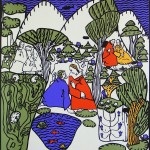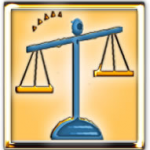 This is the third in a series of articles on frameworks for understanding and managing diversity. Part 1 looked at different developmental stages. Part 2 looked at the huge issue of cultural diversity. This article aims to give an appreciation of the role that religion plays.
This is the third in a series of articles on frameworks for understanding and managing diversity. Part 1 looked at different developmental stages. Part 2 looked at the huge issue of cultural diversity. This article aims to give an appreciation of the role that religion plays.
There is much overlap between religion and culture. In most traditional societies they are practically inseperable whereas in other societies, particularly European cultures, they are much more separate. It may be possible to be a non-religious Italian, but for most Africans before colonisation (and even in many cases today) it would be inconceivable to belong to a culture without religion.
So what is religion? Like culture, it is a set of values, codes of behaviour and relationships which are expressed through story, arts and rituals. It may also include metaphysical ideas about supernatural phenomena – God or spirits. Religion gives its adherents a sense of meaning and purpose for their lives, a set of ethics and practices to help navigate the trials and temptations of life, and a community to belong to for mutual support.
These are all things of very great value, which is why it can be painful when people find that their religion is being questioned, disrespected or misrepresented.
Historically most people have lived in monocultures with everyone sharing just one religion. To a person brought up in such a monoculture, even the presence of a different religious understanding can seem threatening, which may be why there has often been little tolerance for minority religions.
Many wars have been fought in the name of religion, including about two centuries of conflict between Catholics and Protestants in Europe, out of which came the Enlightment ideas of secularism and tolerance. Modern Europeans take for granted the ideas that religion is a private matter than should be kept out of the public arena; that no-one should attempt to impose their beliefs on anyone else; and that it is OK to publicly express disrespect of any or all religion, so long as you are not advocating violence or hatred. But these ‘articles of faith’ of modern secular society are alien to many other parts of the world where the emergence of pluralistic society is a much newer phenomenon.
When managing a team that includes religious diversity the starting point needs to be respect. Conflicts can arise between the demands of the workplace and religious demands over things like clothing, prayer time and holidays. When approached with respect, there can be a surprising amount of flexibility over these issues – although each individual will be different. However, if things are imposed by management in a way that appears disrespectful, religious employees will feel an internal conflict between the demands of work and faith which will diminish their commitment to the workplace.
Conflict can also arise between employees of different faiths, or between religious and non-religious workers. In these cases managers have a duty of care to ensure that no employees feel bullied or discriminated against on the basis of their religion.
Mike Lowe
Helping individuals and teams get into flow





